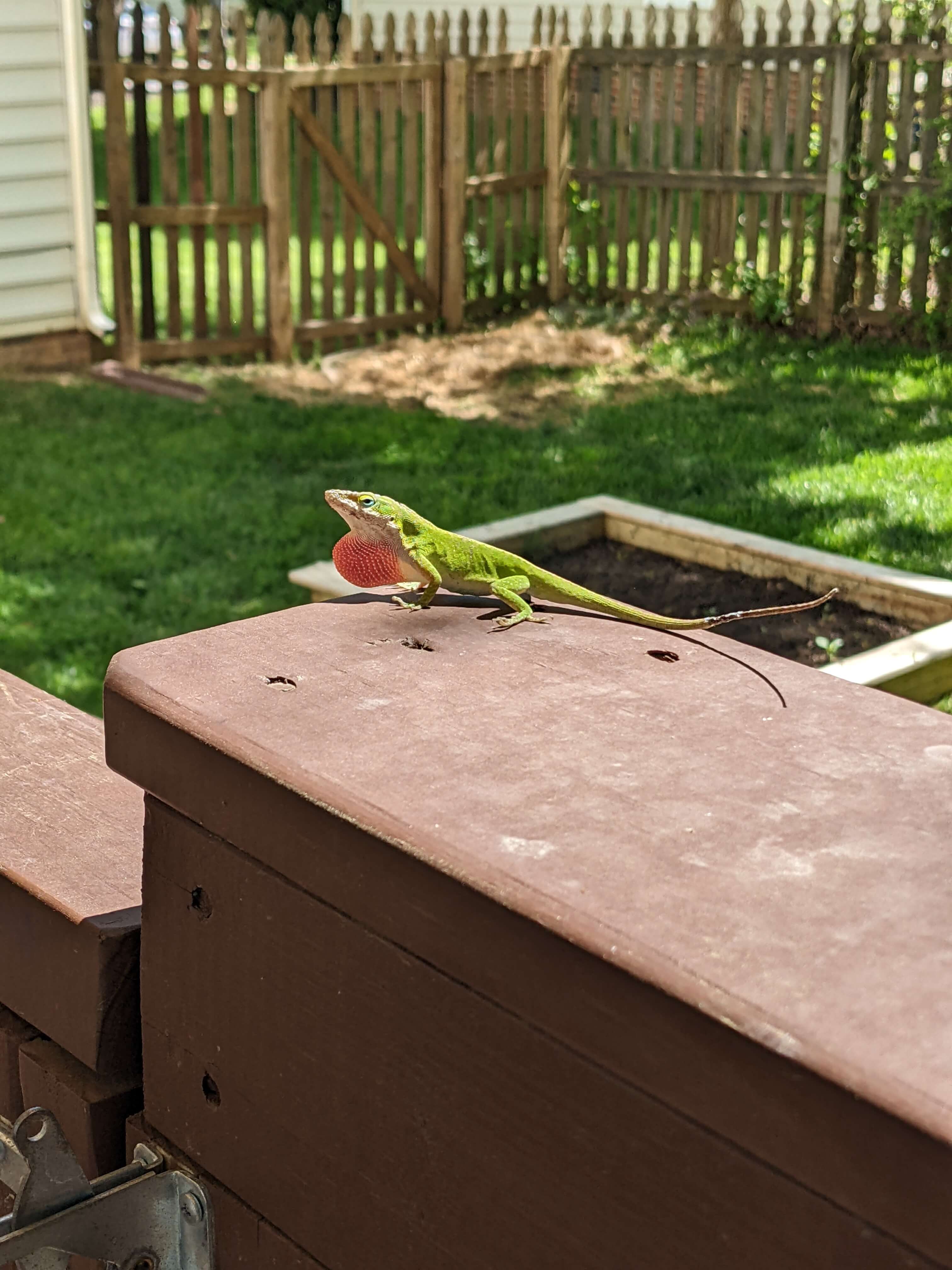Anolis Carolinensis
Carolina Anole

The Carolina Anole is one of over four hundred and fifty species of the genus Anolis. It is a member of the family Dactyloidae, Suborder Iguania, Class Reptilia. It primarily resides in the southeastern United States.
It is most notable for its ability to change several shades from brown to green; for its adhesive-covered toe pads that facilitate climbing; and for their bright pink dewlaps, which are primarily (but not exclusively) present in males.
A dewlap is a hanging flap of skin present in many vertebrates. The word's origin points back to the fourteenth century dewelappe, meaning "fold of skin that hangs from the throat." This, in turn, comes from lappe, meaning "loose piece." However, it is unclear where the first element, "dew" originated. Other creatures with notable dewlaps are the Turkey and older humans.
The dewlap does not look the same to humans and anoles. Since anoles can see a wider range of the UV spectrum, scientists speculate the dewlap reflects ultraviolet light to help attract mates.
Male anoles are intensely territorial. When two male anoles encounter each other they will extend their dewlaps, inflate their dorsal ridges, and bob their heads up and down, attempting to scare the other away. If this doesn't work, they will begin to bite and claw at each other. These encounters rarely end with serious injuries but male anoles commonly have bite marks and scars on their body. I witnessed one fight where a larger anole held the smaller in its jaws for a while, even walking around with the smaller hanging from its mouth, without killing or seeming to even seriously injure the smaller anole.
Each male anole's territory typically includes two to three females. The territories can be practically any environment, from forests to back yards and even city sidewalks. In fact, they have successfully invaded many new locations and are even credited with decimating insect populations in parts of Japan.
Their environments provide some predators, including snakes and cats. When attacked, anoles will drop their tails. These autotomic (meaning, self-amputating) tails wiggle when dropped, serving as a distraction that allows the anole to escape. In the picture above, you can tell this anole has already dropped its tail because new tails grow back a different color and length than the original. The original tail contains bone while the regrown tails only contain cartilage. Since it is the bone structure, particularly the vertebral structure with fracture planes, that allows the anole to drop its tail, it is not possible to drop or regrow their tail multiple times.